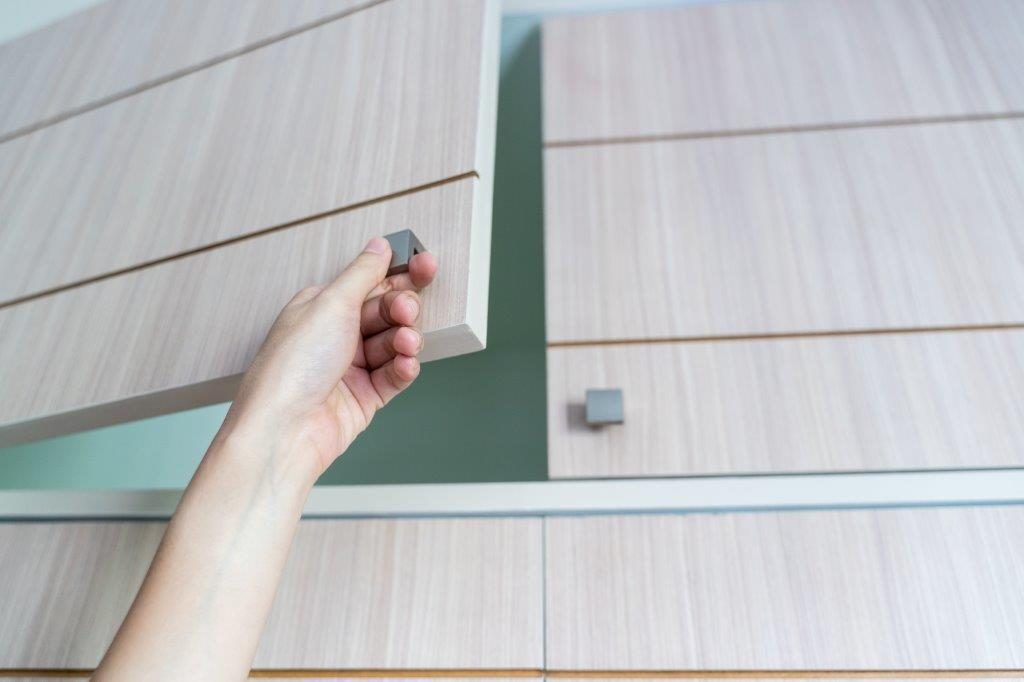
Straining to reach a door pull or handle may be more than uncomfortable – it could cause injury – so we have to consider the potential consequences of our recommendations
When we as aging in place specialists begin evaluating the homes of our clients, or when people, in general, begin looking at their current homes in terms of how practical or safe they are for moving forward, a devil’s advocacy approach may serve us well.
Begin by looking at everything in the home – entrances, doorways, windows and doors, hallways, cabinets, bathrooms, sleeping areas, closets – literally everything – to evaluate how well they function and what might happen if we fail to use them exactly as they are designed or get a little careless. We need to ask ourselves what could wrong in using this particular feature that could lead to a minor, or even serious, accident and disrupt our quality of life and standard of living.
Let’s begin with the outside if the home. Many homes have a series of steps to use to enter the home. They can be located in one area near the door, or they can be located along a walkway in more than one place to bring the user from a much lower street level to the porch, landing, or stoop of the home to gain entry.
There is nothing wrong with steps as a design element except that they are not appropriate for everyone. However, one of the first things we learn to do as a child is to walk and then to climb onto furniture, go up and down inclines, and to use stairs and steps. It is a learned but somewhat innate behavior or skill set. Not everyone does it the same, and many people have physical challenges that inhibit their ability to do it well or at all.
Thus, stairs or steps are not a universal design feature. People with mobility issues (range of motion or frozen joints, arthritis, tendonitis, or other limiting conditions) in their backs, hips, knees, or ankles, for instance, or those with balance or equilibrium challenges may find using steps or stairs to be a serious – albeit impossible – challenge. Still, there is good exercise to be achieved from climbing steps on a regular basis, subject to one’s ability to do so.
In climbing stairs, even with limited ability, there is no shame in relying heavily on the adjacent railing for balance and support. There is no time limit on how quickly we should ascend or descend a set of stairs. There is no prescription as to the number of times we should use the stairs – once a day, a few times, or as often as we can. Likely we aren’t training for any athletic contest where endurance or leg strength is the objective, but there are many health benefits to be achieved for stair climbing for the people who can do it – no matter how awkward or gracious it might appear to an observer or how long it might take us to go up or down a single flight of stairs.
Still, using stairs can mean that a person is susceptible to slipping on a stair tread or falling even when a grabrail is used. Color or surface contrasts between the stair treads and risers can be an issue for mobility. It’s important that the rises and tread be distinguishable and that they are identifiable for what they are without the tendency of blending together or losing definition.
In terms of lighting, whether it’s overhead ceiling fixtures of some type or various lamps the client is using, are there enough of them to light the space well enough to illuminate the walls, flooring, and other surfaces so that there will be no shadows, glare. or items unintentionally hidden from view?
When it comes to flooring, door and cabinet hardware, window controls, faucets, and other items in the home that the occupants use and depend on, consider what can go wrong or cause them difficulty as they are using them. Is there a potential of injury? Are the controls too hard to grasp or too hard to operate? Do they require too much range of motion to turn them on or off? Are they too small to see well or grip? What is the likelihood that a muscle, tendon, or ligament strain or tear could happen? Is there a potential for a cut or bruise to occur as a result of having what they are attempting to use slip from their hand?
The point is that in analyzing the living space of our clients and in suggesting and creating solutions for them, we have to be aware of the possibility of introducing more issues than we are solving and of making their homes even more difficult for them to use effectively. To the extent that we can anticipate issues that could arise and address them proactively so that we are making their homes better for them, we will have been successful.
